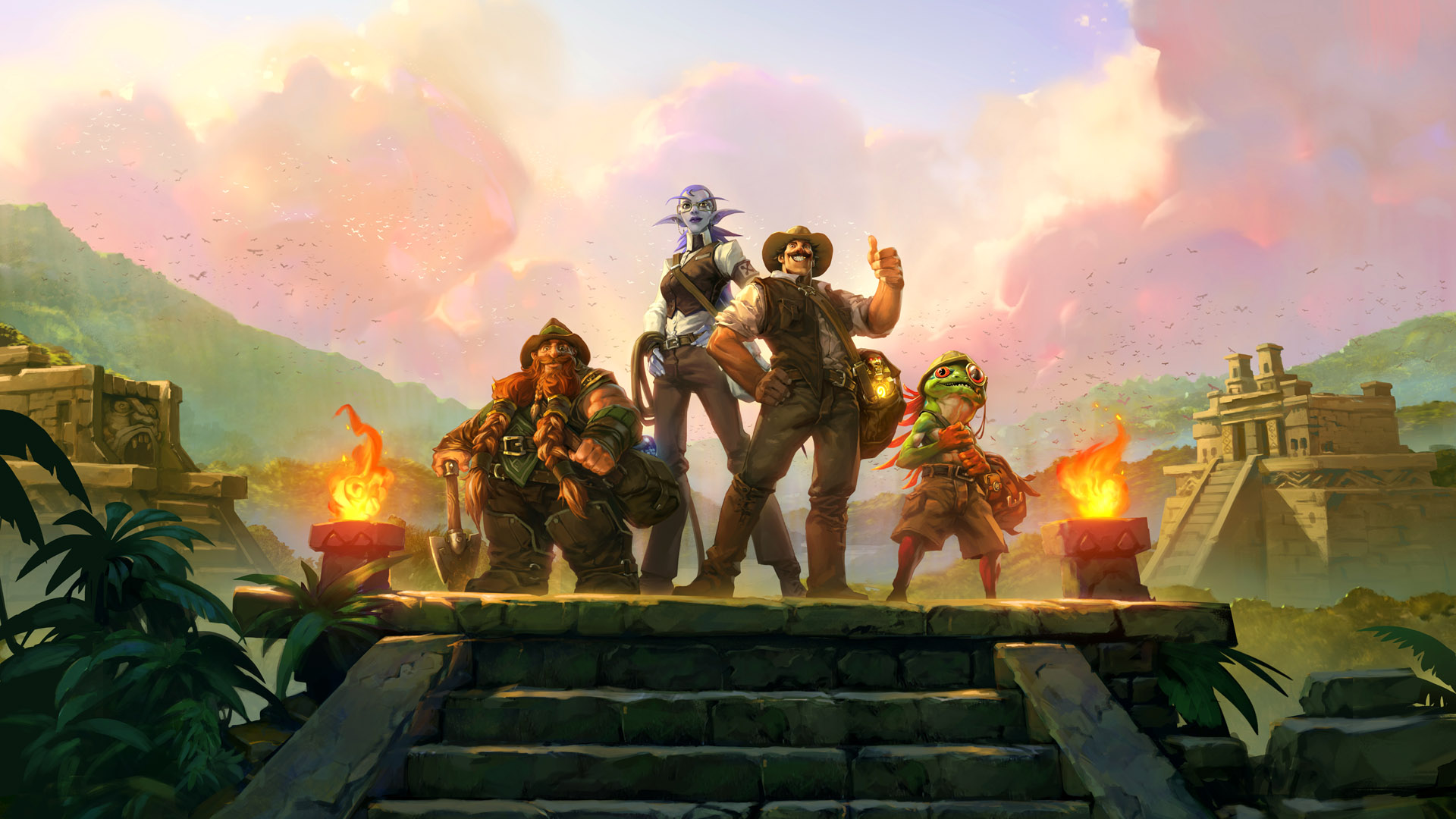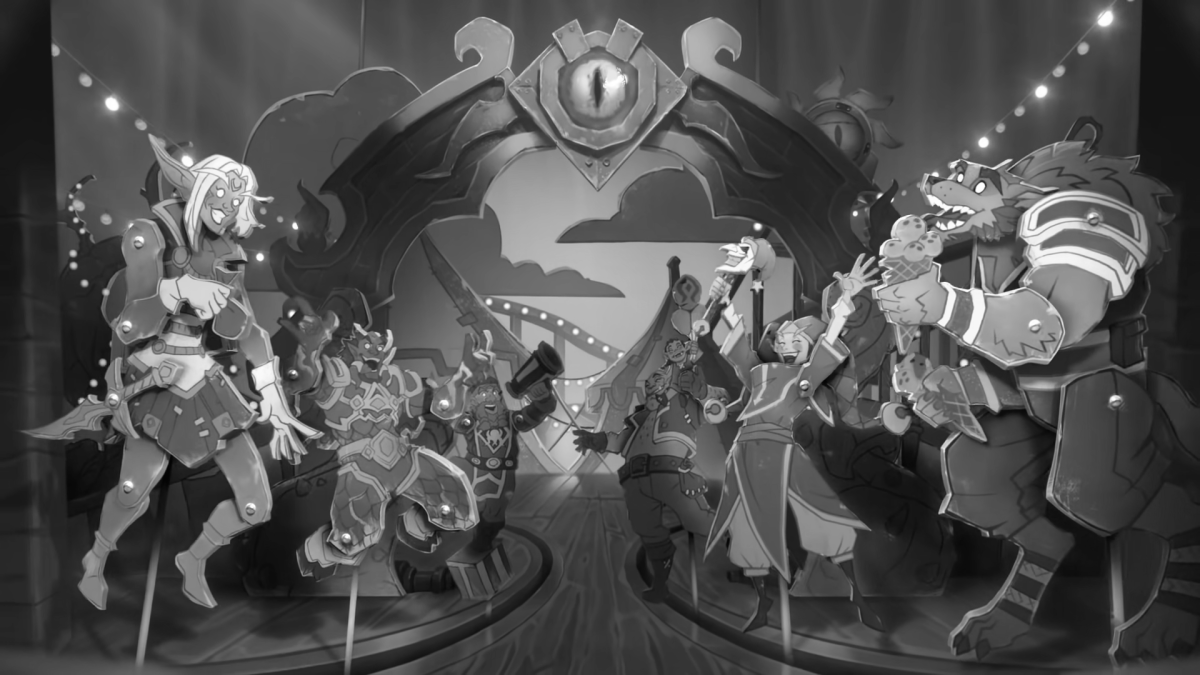In the beginning, Hearthstone was structured to mirror World of Warcraft as closely as possible. That subtitle, “Heroes of Warcraft,” was not a joke. You have characters like Jaina Proudmore, Thrall, and Garrosh Hellscream, summoning mainstays like Dark Iron Dwarves, Azure Drakes, Stranglethorn Tigers. If you were a big World of Warcraft fan, Hearthstone drew you in because of its consistency. The sound and mechanics of a Divine Shield were the same in both games. It was easy to feel at home.
Since Goblins vs. Gnomes, however, that started to change. Hearthstone always maintained a silly, sarcastic sense of humor, but now the game was introducing its own characters. You no longer needed to be ordained in World of Warcraft to make it into the in-universe card game.
“It started in Goblins vs. Gnomes almost out of necessity,” says Ben Brode, Hearthstone’s lead designer. “We needed lots of different mechanical minions in the set, and while there’s a lot of them in the Warcraft universe, we needed more. It was really fun for us to broaden the universe in its own way, and also to give Hearthstone its own identity with cards like Annoy-a-Tron and Snowchugger. We decided to keep doing that going forward, to keep exploring the silly side of Warcraft.”
Hearthstone’s last expansion, League of Explorers, was the first time the dev team fully embraced that creative freedom. Hearthstone adventures were always constructed with a narrative in mind—take the mischievous, cockeyed ramblings of Kel’Thuzad in Curse of Naxxramas or the salty war between Ragnaros and Nefarian in Blackrock Mountain, but League featured an original cast. There’s Reno Jackson, the cheerful troubadour with a strong jawline and very little in his brain; Elise Starseeker, the fastidious intellectual who, unsurprisingly, has the power to turn your deck gold; Arch-Thief Rafaam, Hearthstone’s very own Jafar; and of course the fan-favorite, Sir Finley Mrrgglton.
“It all started with Finley,” says Brode. “We wanted a murloc gentleman explorer, and it felt so charming for us and perfect for Hearthstone.”
The important thing about these characters is that they’re not out of line with the rest of the fiction. Yes, primary Warcraft storylines are filled with many serious-looking men and women saying highly dramatic things about “honor,” “duty,” and many other classic fantasy keywords, but it’s never been afraid to get goofy. For every Illidan Stormrage and Sylvanas Windrunner, there’s always been a Harrison Jones and Nat Pagle.
“We always want to have our feet planted in the Warcraft universe, but we like the idea of taking our Hearthstone lens and looking at the universe through it,” Brode says.
Currently in World of Warcraft you can acquire a miniature Hearthstone board as a goofy little trinket. It’s just one of the many clever nods Blizzard bakes into their games. Like how Elite Tauren Chieftain, an actual band of actual human beings, have canonized and immortalized as a permanent part of the cosmos in practically every related game. It seems likely that someday we’ll be taking quests from Sir Finley Mrrggleton, or doing battle with a Snowchugger.
“I think that cross-pollination is really fun, obviously we love putting characters from World of Warcraft in our game, and we’d love to see say, a Sir Finley Mrrggleton skin for Murky in Heroes of the Storm,” Brode says.
Once upon a time, Hearthstone was a super-casual passion project orchestrated by a very small team in the overarching Blizzard infrastructure. Now, in 2016, it’s one of the more crucial parts of the Warcraft mythos. I doubt anyone expected new characters to be added to the canon through digital cards, but then again, nobody expected Hearthstone to host more than 30 million players. This casual, free-to-play game is now part of the bedrock of one of the most iconic franchises in video game history, and it’s fascinating to watch.
Image via Blizzard













Published: Feb 24, 2016 09:54 am